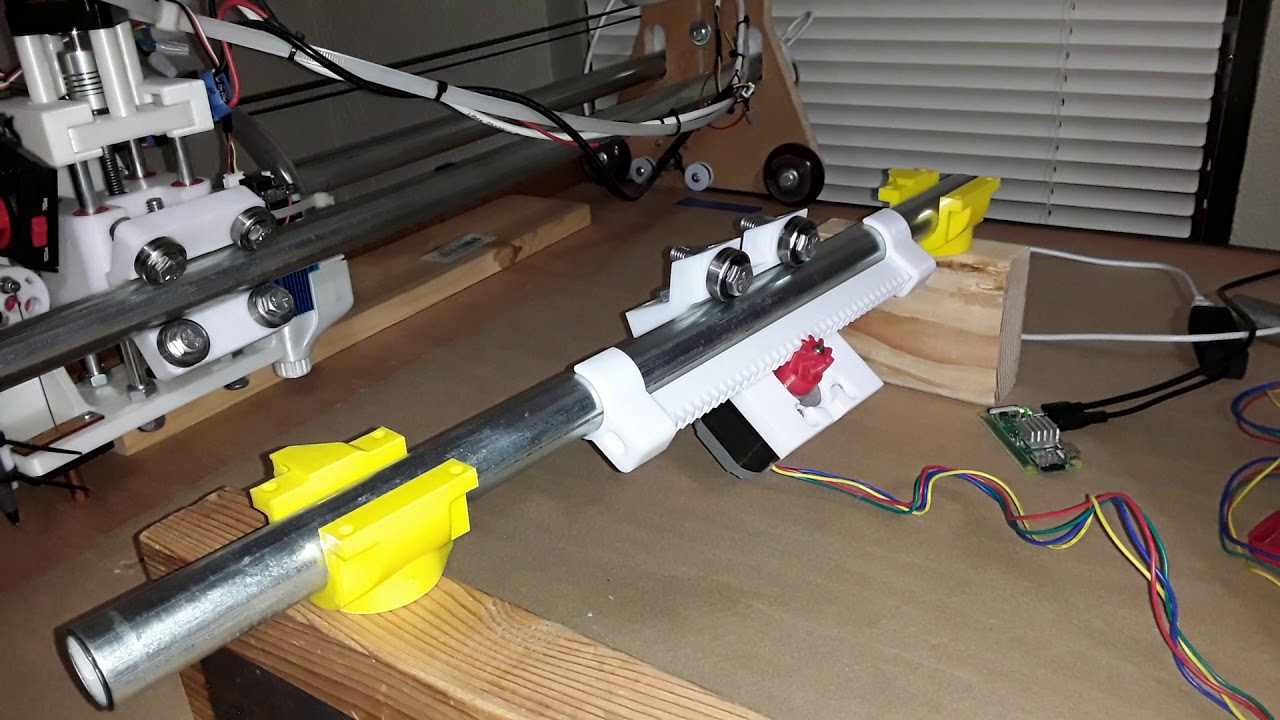With Peter’s “Epoxy Rack” thread, I found my interest in a printed rack and pinion drive piqued once again. But where Peter is working on a cast epoxy rack, I wanted to resurrect and play with the r&p setup I’d used for my Phlatprinter-inspired foam cutting machine… and adapt it with possible application for MPCNC.
I played with Peter’s Openscad design for a while and printed several parts for fit check… only to discover that his design was for 25mm OD tubing. After a few cursory attempts to adapt it for 23.5mm EMT and reconfigure for a printed rack, I finally decided to start from scratch using Onshape, my CAD of choice, and spend my time more wisely. So after a few “fits and clearances” prints I finally have a [kind of] working prototype…
Operation is a bit rough yet… hopefully due to the mix of quick and dirty new parts and a few previously printed parts from the Phlatprinter project.
Having built a number of machines using rollers similar to Ryan’s MPCNC parts, which were sometimes rather painfully adapted to the task, I also decided to see if I could simplify the process by using a modular approach. Starting with a simple sketch to get the basic dimensions and configuration…
I came up with a 25mm thick “module”…
which was the replicated three times in a linear array…
and then “masked” with a sketch to extrude/remove the unwanted “outriggers”.
Then a channel was extruded/removed for the gantry tubing
and the roller portion is essentially complete. A gantry clamp will be added later.
Finally I added a mount for the motor that positions the pinion relative to the rack, residing directly under the EMT rail, and came up with the basic r&p drive configuration.
A number of design tweaks need to be made yet, to make it smoother and more workable, but overall I’m pretty pleased with the basic configuration. I also need to make the parts more printer-friendly and minimize the need for support.
In parallel, I’ve also got a new Prusa i3 MK3S build in progress and think it would really be nice to break it in and use the pretty silver Prusa filament supplied with the kit to build a whole new MPCNC with r&p drive. Hopefully I can whip the parts into shape using my current MK2S printer and the crappy-green filament seen on this prototype… before committing to using the new machine and filament.
More to come…
– David




















